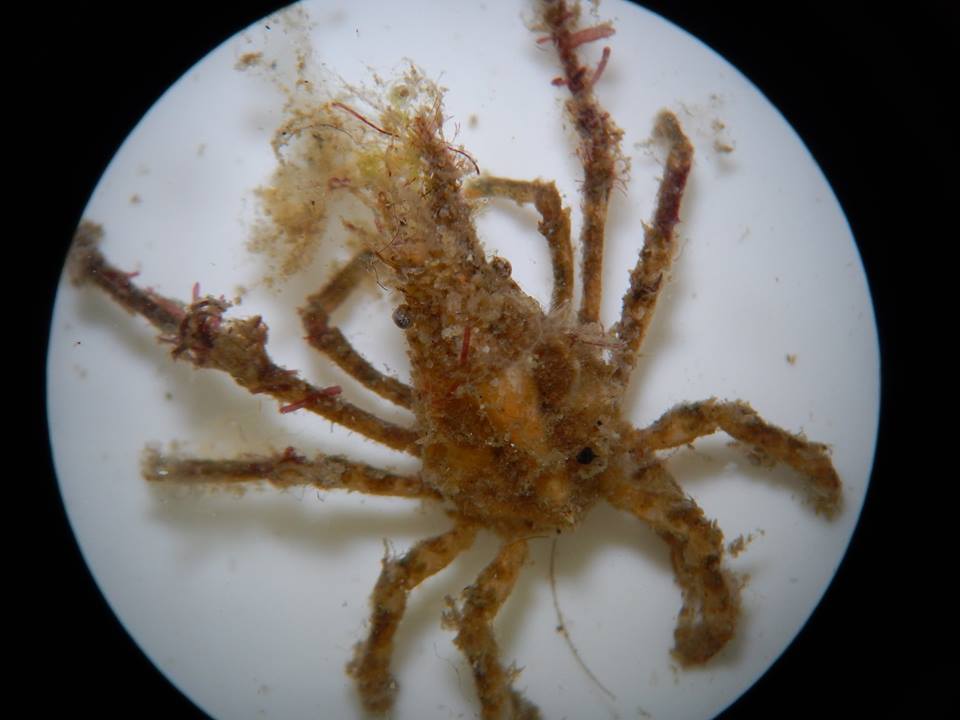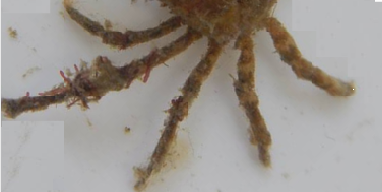Physical Description
material
The
description of this decorator crab has been based on a set of photos taken of a
single specimen, which was kept alive in saltwater in an aquarium at The University
of Queensland. The following observations were made based on the information
gathered from this specimen.

Size
The
genus comprises of animals of various sizes, which differ among species and
individuals. The length of the carapace (cl) was measured from the apices of
the rostrum to the dorsal posterior part of the carapace. The width of the
carapace (cw) was measured with consideration to the largest width. The
specimen collected at Heron Island was a Juvenile - cl 11mm, cw 5mm – with
claws not well developed. Adults may
achieve considerably larger sizes.
External morphology
Spider
crabs present bilateral symmetry and possess a pyriform carapace, and in the
case of Decorator crabs, usually covered by seaweed or pieces of small
invertebrates. The carapace is longer than it is wide and protrudes anteriorly,
forming what is called rostrum. This can be bifid or simple, depending on the
species. In some species the rostrum is considerably long, creating rostral
horns. The dorsal surface of the carapace may possess several spines and
tubercles that are nominated according to the location on the carapace and vary
among different species. These crabs
have 5 pairs of legs, called pereopods, the first pair being called chelipeds and
the other 4 called ambulatory legs. Chelipeds have this name due to the
presence of different structures, such as chelae, which have specialized
functions.

Hyastenus
sp. has sharp divergent rostral horns, which are horizontal in lateral
perspective. They are longer than its antennas.
Their eyes are connected to significantly short stalks, known as
eyestalks, which are situated laterally to the rostrum. This genus is known for
having slender legs, especially the chelipeds if compared to other types of
crabs. The chelipeds are extremely
dexterous and mobile, shorter than the first pair of ambulatory legs, and bear
weak chelae of the same size. Claws in males are better developed than in
females. Ambulatory legs reduce in size gradually from pereopod 2 to pereopod
5. The color of the specimens is light brown with darker patches. However, individuals
may appear to have different colors according to the materials covering their body.


Photos : Artur Palau (2014)
|